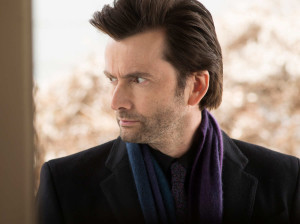 I read this article earlier this week about getting into a villain’s head, and it got me to thinking about writing villains and what makes a memorable one. Recently, I’ve seen two memorable villains, and I wanted to talk about what makes them great.
I read this article earlier this week about getting into a villain’s head, and it got me to thinking about writing villains and what makes a memorable one. Recently, I’ve seen two memorable villains, and I wanted to talk about what makes them great.
Both are from Netflix Marvel shows: Wilson Fisk from Daredevil and Kilgrave from Jessica Jones.
Although they are quite different characters, there are a few things in common between them, and it’s those commonalities which make them memorable.
1. Lots of screen time
The writers didn’t hesitate to give both villains lots of time on screen. Fisk even had most of an episode devoted to his back story, and it was brilliantly done, flipping between flashbacks and current day.
I think if you added up the minutes that Kilgrave probably had less screen time than Fisk, but by Kilgrave being a mind controller, his presence was felt even when he wasn’t on screen. Especially in the early episodes, you never knew when someone controlled by Kilgrave would pop up, and it made the tension so exhausting that I didn’t have the endurance to watch more than one episode at a time.
I’ve certainly seen effective villains who were shadowy presences most of the time, but I think they made a good decision to devote so much time to these two.
2. Complete back story
By the end of the show, we knew so much about Fisk and Kilgrave and what made them tick. The writers managed to make both into sympathetic characters. It didn’t excuse their actions, but their past made them complete people who were more than just cardboard bad guys. We actually saw Fisk fall in love throughout the season and slowly fill in his lover on his background, leaving us to wonder, “Would she accept or reject him?”
 At one point in Jessica Jones, it looked for a brief time as if Kilgrave might redeem himself and reconcile with his parents, whose experiments had awakened his talents and made him psychic. That moment made his subsequent actions that much more horrifying.
At one point in Jessica Jones, it looked for a brief time as if Kilgrave might redeem himself and reconcile with his parents, whose experiments had awakened his talents and made him psychic. That moment made his subsequent actions that much more horrifying.
3. Huge blinders to own actions
One of the most horrifying things about both Kilgrave and Fisk is that both truly believed they were on the side of right. Fisk loves Hell’s Kitchen and everything he did was in an attempt to make it a better place, or so he told himself. Kilgrave insisted that he never hurt anyone, despite ample evidence to the contrary.
Lots of villains soliloquize about the rightness of their actions, and the audience reaction is usually “Yeah, right. Even you don’t believe that.” However, by making Kilgrave and Fisk such complicated humans, it’s almost, for a second, possible to agree with them. And as soon as you start down that path, you have to pull yourself back to reality and wonder what you were thinking.
So there’s a recipe for a great villain. Plenty of screen time. A fantastic back story to provide lots of motivation and a deep-seated belief in the rightness of what they are doing.
I’m certain I’ve yet to achieve that with any of my villains, but now I have something to aspire to.

Netflix rocks. Jessica Jones is the best show this year!